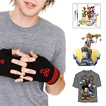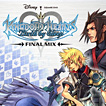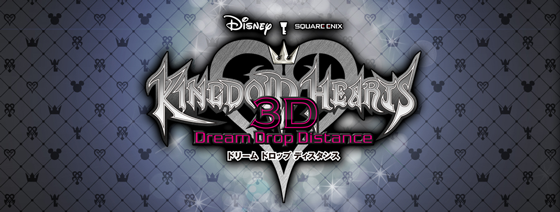Famitsu Interview with Tai Yasue Co-Director of KH3D
In an issue of Famitsu Weekly, they have conducted an interview with Tai Yasue, who is the co-director of Kingdom Hearts 3D. In this interview, he discusses a bit about making Kingdom Hearts 3D and the story of how Wondernyan was created!
Thanks to goldpanner, we know have translations of the interview:
We asked the co-director for this title, Tai Yasue, for some behind-the-scene stories. Here we present must-see info on how the bold action was brought to life and the secret story of Meow Wow!
*Mr. Yasue is a member of the Square Enix Osaka Team. This interview was conducted via a video call between Tokyo and Osaka.
The Sense of Achievement That Comes After Frustration
—Please tell us about an episode that left you with a deep impression of the development of KH3D.
Yasue: When I think of the final stages of development, I am left with a strong impression of unique enthusiasm. We had some exhausting times when we couldn’t even go home, unexpected bugs popping up. Like for example when the Dream Eaters movements while making friends were looking weird no matter what we did and everyone put everything we had into adjusting it. We couldn’t have guessed it would get that chaotic after the refreshing feeling in early stages of development (laughs).
—Where did you have the most hardship?
Yasue: It could be that I’m forgetting, but I don’t think there were really hardships as such. We were busy, but development was speedy and it went well, so… aah, the Drop was a hardship.
—We heard that the Drop System by which you control both Sora and Riku was suggested by (Director) Mr. (Tetsuya) Nomura.
Yasue: When Nomura told us, ‘I want you to do a system that forcibly switches which character is being controlled,’ I felt dread (laughs). It was going to be a change in tempo for KH so far, see. The talks about this amongst the planners really stacked up. It would come off as demanding if it was simply a restriction, so in order to make it feel like a positive thing we made it so Sora and Riku could co-operate through Drop Points. I think bringing that into reality was a huge point.
—It’s pretty frustrating dropping in a boss battle and having to start all over again when you come back (laughs).
Yasue: (Laughs). The thing about games is, if there isn’t an aspect of frustration, then there won’t be any sense of satisfaction, will there? That’s exactly why I wanted to put that in!
—That’s certainly true, there’s a particular sense of satisfaction that comes from beating a boss just in time. Incidentally, the game counts how many times you Drop. Is there a meaning to that?
Yasue: The Drop count is shown, like play time, as something to perhaps set goals for. It doesn’t affect anything. It’s more important that Dropping changes the state of affairs in the worlds, I would say.
—The ‘event forecast’ that lets you forecast change in the worlds is an interesting test.
Yasue: That was suggested as a ‘weather forecast system’. You get worked up when you know what day a typhoon is coming, don’t you (laughs). I wanted to organise things by making players able to see future changes in affairs.
From Action to Action
—With action, the implementation of Flowmotion is a big topic. How did that come about?
Yasue: During talks with Nomura, we came to see that we were going in the direction of running around the map freely, and action using walls and poles was suggested to fit with that. In the beginning, we began making it using data from KHBBS. The plans solidified over two or three days, and had taken shape at the end of one or two weeks. We never wavered from the direction we’d decided upon after that. We did add Blowoff and make some fine adjustment during, though. I get the impression that this is the shape of the natural evolution for KH.
—Was being able to use it not just for moving but also for attacks something you incorporated from the start?
Yasue: Yes, it was actually. The battles in this title feel good, so I was thinking of the action as something I wanted to have used in battle, something that could be used not just for moving but also for attacking. Also with Flowmotion you can get basically anywhere, so the amount of moving gets bigger, you see. Accordingly, we had to make the maps bigger three-dimensionally. And then we had to work out the positioning of treasure chests a bit and make places that were hard to get to and the like.
—It certainly is rather difficult to collect all the treasure chests in this title.
Yasue: It’s pretty terrible isn’t it (laughs). Well, we made the movement gimmicks important to the maps. In KH it’s important for the player to come into contact with a gimmick and trigger some kind of action, so we added mechanisms like stretching ropes in Traverse Town and climbing pipes in The World That Never Was. It’s not just one action. Jump off a pole to kick off a wall into Blowoff… I think it’s important to use the gimmicks in a flow like that and connect one action to another.
—And, how did you come about adopting Reality Shift?
Yasue: Nomura said he wanted tight playability on the bottom screen, so, keeping in mind gameplay that fitted with the style of each world and ‘dreamlike-ness’, we thought up Reality Shift. There was also the fact that so far I hadn’t made a game that used touch and slide controls and as a planner I wanted to try it.
Recoiling from Meow Wow
—The Dream Eaters have a different look to the enemies in the series up until now. What sort of concept was there?
Yasue: Nomura was particular about that. We had to make sure they looked awkward but cute, an un-fawning type of cuteness. Their behaviour is the same, they don’t perfectly support the player, they goof off and the like. We took particular care to give them a sense of personality. They are a bit no-good in some ways. By the way, when Nomura first showed me a picture of Meow Wow, I recoiled. Did Nomura seriously draw this, sort of thing (laughs). At that point in time he already had movements specified, like, it has legs but it bounces on its stomach. After that for some reason there was also a period where we gave it gross bug-like movements with wiggling legs (dry laughter), but when I saw the finished product it was charmingly cute. I thought, ‘good old Nomura!’ (laughs)
—(Laughs). This title is bursting with things to enjoy. Even the growth system varies by personality.
Yasue: You can prod and stroke Spirits on the training screen, but I like to be horribly unkind, so right from the start I pushed the prodding portion. I’m sure a kind person would stroke them, but when I look at Meow Wow, no matter what I end up wanting to prod it (laughs). And so, we went with a system where you don’t fail because of the way you make contact, but instead can enjoy things such as growth and personality variance at ease.
—Please tell us about the Flick Rush minigame.
Yasue: In the beginning we planned wi-fi battles that took and used a photo of your opponent, but Nomura said that was no good, and so we shifted in the direction of something like the card game ‘Speed’. At the time I received from Nomura a storyboard he had scribbled in pencil. From there we adjusted it many times until it took the shape it has today. I personally like making minigames, and I felt such a sense of challenge and worth, enough that I felt like I always wanted to make minigames. Flick Rush was fun for me as a creator because I was able to hear all sorts of opinions and improve during the various on-the-spot testings.
—Could you please tell us your recommended Dream Eater for Flick Rush?
Yasue: Naru Bird, maybe… cause it comes dropping out of the sky like a bomb. After that I like Meow Wow… gobbled up by Boukon Rex. Meow Wow is just perfect for getting stuck between the teeth (laughs).
—You’re determined to torment Meow Wow, aren’t you (laughs). By the way, Mr. Yasue, where do you focus your determination when it comes to action?
Yasue: That’s difficult… In KHBBS, I was very conscious of how good it felt to have style variation in battle, but in this title, perhaps a ‘feeling of piercing speed’. Included with that is ‘how good it feels to connect from action to action’. Rather than aiming for the same thing every time, I want to look for a different route. I know I want to change the concept of action each time I make a KH title in the future, too.
—A while ago we heard from Mr. Nomura that FF Verses XIII, FF Type-0, and the KH series each have a different direction when it comes to action, and that KH3D shows a new direction for the KH series in the future. What are your thoughts on that, Mr. Yasue?
Yasue: I think that the main characteristic of the KH series is being able to play dynamically inside carefully and respectfully crafted miniature-garden-like worlds. However, within that I want to clear away all the limits on the places you can go and the things you can do, and shape something you can bust out freer and freer playing. With KH3D’s Flowmotion we hit gameplay and technical problems while making you able to run along roofs freely, but we jumped those hurdles, and we will in the future too. I want to overturn the common knowledge of gaming.
—And finally, a message to the readers.
Yasue: Packed with many types of gameplay, we have completed a game that could be called a masterpiece above KHBBS. There is a lot of room to move here, and even on our development team we have many kinds of players, such as people who play nothing but Flick Rush, people who won’t use anything but Flowmotion, people who only stroke their Spirit. I truly wish for all the gamers to also discover their own special way to play and a play style they like, and play to the end.







